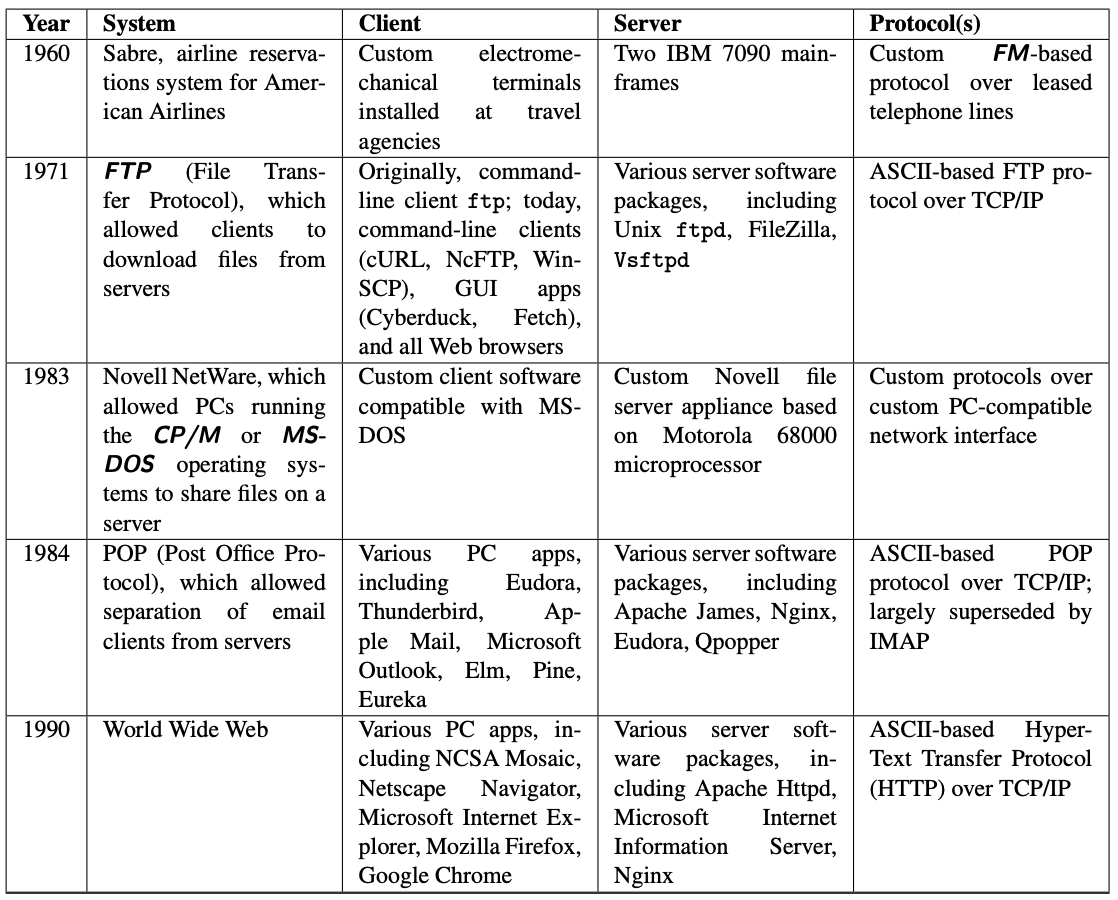3.1. Introduction¶
Every time you use a Web browser to visit a site, or use a mobile app that also makes use of the cloud (such as when a weather app downloads the latest weather forecasts), you are using a Software-as-a-Service (SaaS) client to make one or more requests of a SaaS server. SaaS based on Web protocols is the most widely deployed example of a client-server architecture: clients are programs whose specialty is asking servers for information and (usually) allowing the user to interact with that information, and servers are programs whose specialty is efficiently serving large numbers of clients simultaneously.
Modern SaaS clients can take many forms. Whether you visit Google Maps using a browser on your PC, a browser on a smartphone, or a smartphone native app, you’re using a SaaS client. And while the clients differ in how they present and let you interact with Google Maps since each is specialized to its task, all three are communicating with the same Google Maps SaaS service.
In contrast to the client software, which is typically a discrete app running on a single device such as a PC or smartphone, the “server” is in fact typically a collection of computers running multiple different software components (which we will meet in due time) that together comprise the functionality of the actual site. The way these components are dis- tributed over one or many computers depends on the type of hosting environment and the number of users the app must serve. In any case, “the server” appears as a single logical entity to the client, which can remain blissfully unaware of the server’s deployment topology. Indeed, you will deploy on your own computer a “mini-server” with just enough functionality to let one user at a time (you, the developer) interact with your SaaS app during development and testing.
Distinguishing clients from servers allows each type of program to be highly specialized to its task: the client can have a responsive and appealing user interface, while the server concentrates on efficiently serving many clients simultaneously. Client-server is therefore our first example of a design pattern — a reusable structure, behavior, strategy, or technique that captures a proven solution to a collection of similar problems by separating the things that change from those that stay the same. In the case of client-server architectures, what stays the same is the separation of concerns between the client and the server, despite changes across implementations of clients and servers.
Of course, client-server isn’t the only architectural pattern found in Internet-based ser- vices. In the peer-to-peer architecture, used in BitTorrent, every participant is both a client and a server—anyone can ask anyone else for information. In such a system where a single program must behave as both client and server, it’s harder to specialize the program to do either job really well. But in the early days of computing, client-server architectures made particularly good sense because client hardware needed to be less expensive than server hardware, so that one could deploy large numbers of clients served by one or a few very expensive servers. Today, with falling hardware costs leading to powerful smartphones and Web browsers that support animation and 3D effects, a better characterization might be that clients and servers are comparably complex but continue to be specialized for their very different roles. Indeed, we will see those distinct roles reflected in the design patterns that appear in client frameworks (Angular, React, and so on) vs. those that appear in server frameworks (Rails, Django, Node, and so on). Even terms such as “client push” reflect the built-in assumption that clients are distinct from servers.

Although client-server systems long predate the emergence of SaaS, the Web, or even the Internet, because of the Web’s ubiquity we will use the term “SaaS” (software as a service) to mean “client-server systems built to operate using the open standards of the World Wide Web,” that is, in which Web services are accessed using the protocols and data formats described in this chapter, with Web sites accessed via browsers or via mobile apps being the most common examples.
Self-Check 3.1.1. What is the primary difference between the roles of clients and servers in SaaS?
A SaaS client is optimized for allowing the user to interact with information, whereas a SaaS server is optimized for serving many clients simultaneously.